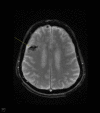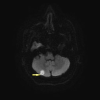Endemic Fungal Infective Endocarditis Caused by Coccidioides, Blastomyces and Histoplasma Species in the United States
- PMID: 38746483
- PMCID: PMC11093152
- DOI: 10.7759/cureus.60285
Endemic Fungal Infective Endocarditis Caused by Coccidioides, Blastomyces and Histoplasma Species in the United States
Abstract
We describe a recent case of Coccidioides bioprosthetic aortic valve infective endocarditis successfully managed at our institution. This led us to perform a literature review of endemic fungal infective endocarditis in the United States caused by Coccidioides, Blastomyces, and Histoplasma. Symptoms preceded infective endocarditis diagnosis by several months. Patients with Coccidioides and Blastomyces infective endocarditis were younger with fewer comorbid conditions. Valvular involvement was relatively uncommon in Blastomyces infective endocarditis (27%). Fungemia was noted in patients with infective endocarditis due to Histoplasma (30%) and Coccidioides (18%). Mortality rates for infective endocarditis were high (Histoplasma, 46%; Coccidioides, 58%; Blastomyces, 80%); infective endocarditis was commonly diagnosed post-mortem (Coccidioides, 58%; Blastomyces, 89%). Most surviving patients with infective endocarditis (Histoplasma, 79%; Coccidioides, 80%) underwent valve surgery along with prolonged antifungal therapy. The two surviving patients with Blastomyces infective endocarditis received antifungal therapy without surgery.
Keywords: blastomyces; blastomycosis; coccidioides; coccidioidomycosis; endemic infections; endocarditis; fungal infection; histoplasma; histoplasmosis; valvular heart disease.
Copyright © 2024, Kasule et al.
Conflict of interest statement
The authors have declared that no competing interests exist.
Figures



Similar articles
-
Cryptococcal meningitis is a cause for cross-reactivity in cerebrospinal fluid assays for anti-Histoplasma, anti-Coccidioides and anti-Blastomyces antibodies.Mycoses. 2019 Mar;62(3):268-273. doi: 10.1111/myc.12882. Epub 2019 Jan 1. Mycoses. 2019. PMID: 30565753 Free PMC article.
-
Murine models of blastomycosis, coccidioidomycosis, and histoplasmosis.Mycopathologia. 1999;146(2):53-65. doi: 10.1023/a:1007081707287. Mycopathologia. 1999. PMID: 10822504 Review.
-
Molecular taxonomy and epidemiology of Blastomyces and Histoplasma species.Mycoses. 1997 Sep;40(3-4):69-81. doi: 10.1111/j.1439-0507.1997.tb00191.x. Mycoses. 1997. PMID: 9375491
-
Evaluation of commercial reagents to identify the exoantigens of Blastomyces dermatitidis, Coccidioides immitis, and Histoplasma species cultures.Am J Clin Pathol. 1984 Aug;82(2):206-9. doi: 10.1093/ajcp/82.2.206. Am J Clin Pathol. 1984. PMID: 6465085
-
The epidemiology and ecology of blastomycosis, coccidioidomycosis and histoplasmosis.Zentralbl Bakteriol Mikrobiol Hyg A. 1984 Jul;257(2):219-27. Zentralbl Bakteriol Mikrobiol Hyg A. 1984. PMID: 6385560 Review.
Cited by
-
Coccidioides Fungemia in Central California: A 10-Years Experience.Mycopathologia. 2025 Jun 6;190(4):50. doi: 10.1007/s11046-025-00961-7. Mycopathologia. 2025. PMID: 40478371
References
-
- Native vs prosthetic valve Histoplasma capsulatum infective endocarditis: a case report and systemic literature review comparing patient presentation, treatment modalities, clinical outcomes, and diagnostic laboratory testing. Boyanton BL Jr, Boamah H, Lauter CB. Open Forum Infect Dis. 2021;8:0. - PMC - PubMed
-
- Coccidioidal granuloma: analysis of fifty cases. Evans N, Ball HA. J Am Med Assoc. 1929;93:1881–1885.
-
- Cutaneous, pulmonary, and cardiac invasion in a young woman. Aronowitz P. https://www.consultant360.com/articles/cutaneous-pulmonary-and-cardiac-i... Consultant. 2014;54:737–738.
-
- Prognostic significance of cutaneous lesions in coccidioidal granuloma. Epstein E. Arch Derm Syphilol. 1938;38:752–755.
Publication types
LinkOut - more resources
Full Text Sources
